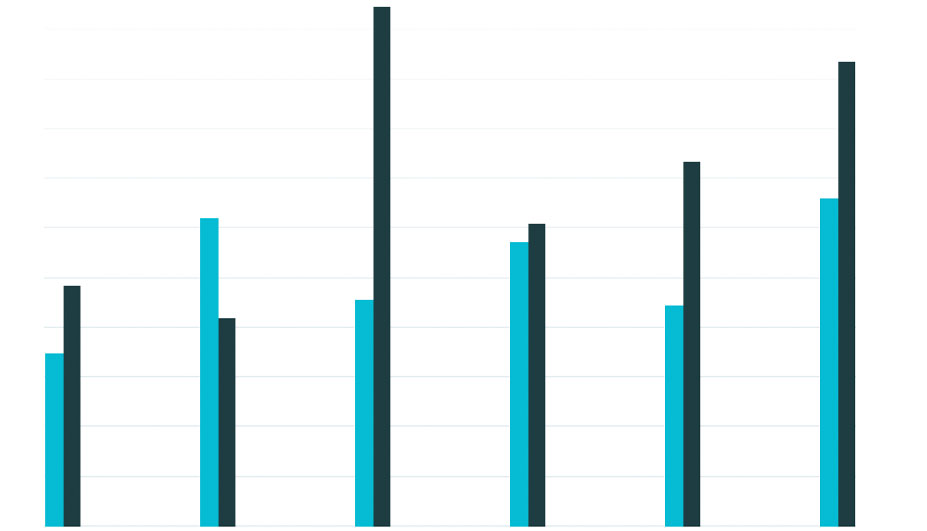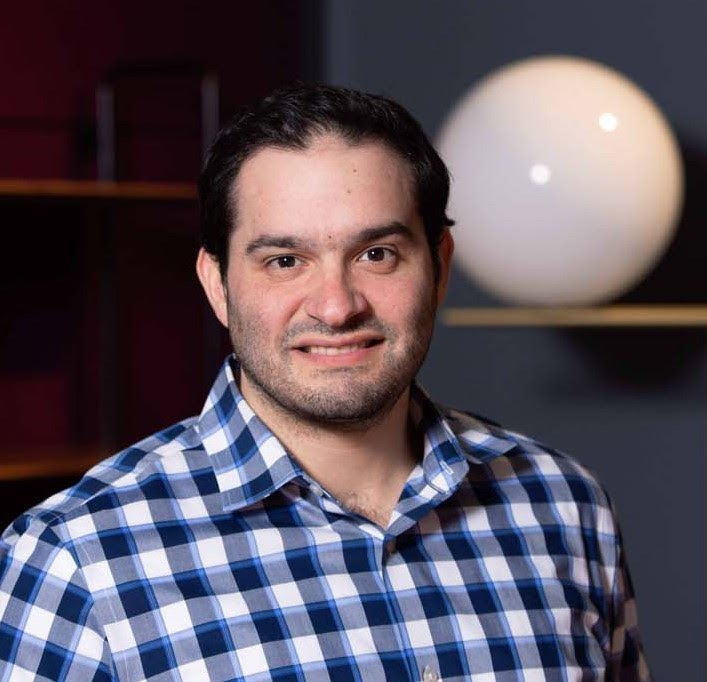
x
Steelcase consultants can convert 10x more business through better analytics.
We mentored Steelcase on migrating their analytics to the cloud. Now consultants can convert 10x more business.
- Steelcase had big data problems but lacked the infrastructure to analyze them at scale
- Their team of data scientists and engineers knew it was time to migrate to the cloud so they could start building more advanced solutions
- The multitude of cloud-based products made it difficult to choose and make a compelling case to senior leadership.
Jorge had big plans for his department at Steelcase, but one thing was standing in his way
The data infrastructure
To be fair, their existing small data infrastructure had taken Steelcase, the $3B per year leader in office furniture solutions, to where it was today, but Jorge and the team knew a big change was needed to get to the next level.
“We knew what we had to do, we just didn’t know exactly how to do it.”


Big Data Problems, Small Data Infrastructure
Steelcase was already gathering big data with sensors prospective clients placed around their offices. This sensor data made it possible for Steelcase to answer complicated questions like “Does my office need more meeting rooms? Does it need more chairs? What does the foot traffic say about our layout? Where are we wasting space?”
Analyzing the massive amount of data with the current system, however, was slow going and bottlenecking the new business pipeline. With increased computing power, Steelcase consultants could save time usually spent on manual computing and send more proposals to prospective customers.
But, as many data science professionals know, migrating to the cloud is no easy task.
The first challenge would be navigating the multitude of cloud-based big data and analytics products on the market. The second would be to convince executive leadership to make a large investment in technology largely foreign to them.
In many ways, Jorge and his team were at a standstill.
“Jesse’s message really resonated with us. He was able to frame the problems we were facing in a way that made us feel completely understood.”
Jorge Lozano
Applied Data Science Supervisor – Steelcase
Enter Big Data Institute's Mentoring Program
Jorge and his team first heard Jesse Anderson from Big Data Institute speak at a conference in Portland. During his presentation, Jesse explained the potential pitfalls when migrating to the cloud, and Jorge remembers thinking that this might just be the expert they’d been searching for.
“Jesse’s message resonated with us. He was able to frame the problems we were facing in a way that made us feel completely understood.”
Jorge reached out to Jesse after the presentation and they talked about the project at Steelcase. After a few calls and sharing of resources, Jorge was confident that Jesse would help get their cloud migration project off the ground and officially joined Big Data Institute’s Mentoring Program.
Identifying the ‘must haves’
Now that the Mentoring Program was officially underway, the first step was finding a cloud solution that would be the best fit for Steelcase.
“When you’re browsing the market, you kind of feel like you’re on the TV show The Bachelor and you have 20 individuals who are all claiming they are the best choice. And they probably are the best in one specific thing, but we needed to understand if their specific thing was best for our company. Jesse helped us narrow the field by identifying what our ‘must haves’ and our ‘nice to haves’ were.”
With so many options and variables, potentially paying a premium for a feature that was not a focus for Steelcase was the ultimate concern for the company.
“Jesse was strictly professional and vendor agnostic. At times he would even tell us ‘Yes, this is a good product, but you are not at the level to need it yet, so save your money. That type of guidance is invaluable.”


Making a case to senior leadership
The team also needed to make sure their choice considered the company’s previous technology investments.
“For example, we are a big Microsoft user, so Jesse helped us think strategically to ensure our new direction would build upon investments we’d already made.”
Once the best cloud solution was identified, Jesse and the Steelcase team had to tackle the second challenge: getting senior leadership on board.
“It’s hard when you don’t know exactly what you need, but you know that you need something different. That’s not a good spot to be in when you are trying to convince senior leadership to make a change. Jesse gave us insights into the different cloud options, outlining each of their strengths and weaknesses, and what other organizations were doing — all of which helped us frame a strong argument and make a case to leadership.”
With a clear understanding of what cloud system to go with and a roadmap for how to scale the business using the new technology, senior leadership was quick to sign off.
And then, something unexpected happened.
“Through this process, the company saw that there was a real difference between its data scientists and its data engineers, that we weren’t always interchangeable. In the end, they created an entirely new team to allow us more autonomy and make more of an impact.”
“The internal conversation at Steelcase has changed. Now, our team has a seat at the table.”
Jorge Lozano
Applied Data Science Supervisor – Steelcase
The Results
With the new system now in place, Jorge and the team has been building out the solutions they knew the company needed to unplug the pipeline and the results are impressive: Consultants are now able to send out 10 new business proposals at the same time it historically took to send one.
In a business where each new deal typically brings in six and seven figures per year, this has meant a dramatic increase in annual revenue, not to mention the $300,000 per year savings in infrastructure costs alone.
And here is another result of the Mentoring Program which is less quantifiable but important to Jorge and his team:
“The internal conversation at Steelcase has changed. Now, our team has a seat at the table.”
With the Mentoring Program completed, Jorge and his team are confident that they’ve started their project on the right foot. They’ve selected the best-fit cloud provider, senior leadership is on board with the investment, and there’s a system in place to continue to build out solutions and scale their data science capabilities even further.
“Jesse has a great framework for mentoring. He wants to help you help yourself. He says ‘Show me your project, I’ll teach you how to think through it, we’ll walk through it together, and next time, you’ll have a framework to handle it on your own.”
Q&A with Steelcase’s Data Analytics Director and Data Scientist
For a broader perspective on the Mentoring Program and big data implementation, we did a Q&A with Steelcase’s Data Analytics Director, Kevin Betser, and Data Scientist, Kevin Tian.
Q. What was the biggest challenge you saw facing the migration project?
Kevin B: Making informed decisions about the specific technologies we need to invest in which match the needs and budget of our organization. We needed an industry veteran that could provide rapid feedback and guidance on questions we had as migration often doesn’t allow for much exploration or self-discovery.
Kevin T: Our biggest challenge was migrating on-prem data into the cloud.
Q. From your perspective, how were Jesse and Big Data Institute most helpful to you and your team?
Kevin T: Keeping us focused on the main goal, providing guidance on architecture validation, and mentoring the whole team on big data skill development.
Kevin B: Providing rapid feedback on questions related to technology ad upskilling. Jesse made himself available to connect via having an open calendar, and we met with Jesse very regularly as questions came up.
Q. What result are you seeing now that you find most interesting or compelling?
Kevin B: In a very short period I believe we’ve changed our thinking across our team on what data engineering is, and what skillset it takes to be a data engineer. The engagement with Jesse helped establish the scope, skillset, and composition of our Data Engineering team and enabled us to quickly cut through any internal pushback or concerns we might have from others in our Data & Analytics team (such as our legacy business warehouse team).
Kevin T: The team is now much more familiar with the tech stack of choice.
“We needed an industry veteran that could provide rapid feedback and guidance on questions we had as migration often doesn’t allow for much exploration or self-discovery.”
Kevin Betser
Data Analytics Director – Steelcase
Could your company benefit from Big Data Institute’s Mentoring Program?
Use the contact form below to start the conversation.